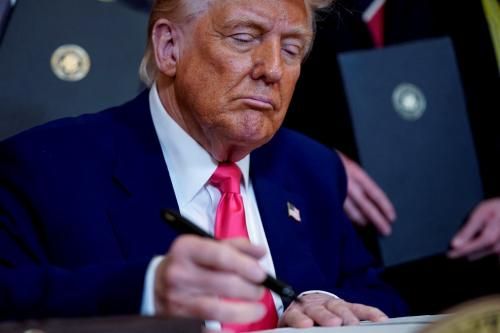Executive Summary
The U.S. Congress continues to debate a potential cap-and-trade program for the control of greenhouse gas emissions. The economic effects of such a bill remain in dispute, with some arguing that a cap-and-trade program would create jobs and improve economic growth and others arguing that the program would shift jobs overseas and hit households with large energy price increases. This report applies a state-of-the art global economic model to the question and offers insights to policy-makers about how to design the program to achieve long-run environmental goals at minimum cost and with low risk to the economy.
The report analyzes a range of possible cap-and-trade policies for the United States. The seven policy scenarios we analyze meet similar long run environmental objectives, but differ in their emissions trajectories and costs. The first policy we analyze hits the emissions targets proposed by the Obama administration. The second hits the targets in an early “discussion draft” version of the bill proposed by Representatives Henry Waxman and Edward Markey. We modeled both of these approaches as annual caps on U.S. emissions that decline linearly over the lifetime of the policy to reach in 2050 an emissions level that is 83 percent below 2005 levels.
We consider two additional policies that would achieve much the same long-run environmental goals as the first two policies but which minimize the cost. Finally, we present three policies that augment the Obama administration’s target proposal with three different cost-containment mechanisms.
We show that the first two policies, the Obama administration and Waxman-Markey discussion draft targets, produce modest long-term effects on U.S. gross domestic product (GDP) and consumption. The two approaches produce slightly higher overall costs and quite different emissions trajectories than the cost-minimizing alternatives. Compared with the linear emissions trajectories, the cost-minimizing approaches result in relatively steep cuts in the early years, less steep declines in the middle years, and steeper cuts from about 2035 to 2050. The accumulated effect on GDP of each of the four carbon controls through 2050 is roughly equivalent to reaching 2050’s reference GDP in 2051 rather than 2050.
Finally, our results also show that adding a price ceiling or price collar can provide security against future events that would adversely affect an emissions permit market without unduly compromising the policy’s effectiveness in reducing emissions. The report concludes that a policy similar to the Obama proposal, augmented by a price collar or safety value, could achieve very significant long-term reductions in emissions while imposing a firm upper bound on compliance costs.
The Brookings Institution is committed to quality, independence, and impact.
We are supported by a diverse array of funders. In line with our values and policies, each Brookings publication represents the sole views of its author(s).





